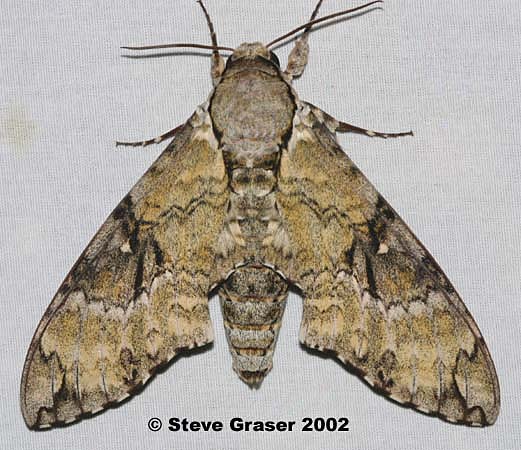
Manduca vestalis by Steve Graser, Yasuni, Ecuador, September 7, 2002 - 12:35 AM.
This site has been created by Bill Oehlke.
Comments, suggestions and/or additional information are welcomed by Bill.
TAXONOMY:
Family: Sphingidae, Latreille, 1802 |
|
|
Updated as per CATE Sphingidae (Venezuela, French Guiana, Ecuador, Bolivia); February 11, 2011 Updated as per Heteroceres of French Guiana; February 11, 2011 |

This site has been created by Bill Oehlke.
Comments, suggestions and/or additional information are welcomed by Bill.
TAXONOMY:
Family: Sphingidae, Latreille, 1802 |
I suspect it also flies in Colombia, Peru, Guyana and Suriname.
There is only one prominent, thin but distinct, S-shaped, post median line on the left forewing. The other "pmlines" are broadly diffuse. Ground colour is light grey, often with a yellowish cast. There are two dark dashes below the cell and the upper half of the median area is darker than the lower half.
Use your browser "Back" button to return to the previous page.
Return to Sphingidae Index
Return to Sphingini Tribe
This page is brought to you by Bill Oehlke and the WLSS. Pages are on space rented from Bizland. If you would like to become a "Patron of the Sphingidae Site", contact Bill.
Please send sightings/images to Bill. I will do my best to respond to requests for identification help.
Enjoy one of nature's wonderments: Live Saturniidae (Giant Silkmoth) cocoons.
 Show appreciation for this site by clicking on flashing butterfly to the left. The link will take you to a page with links to many insect sites. |